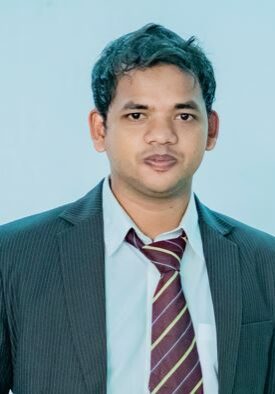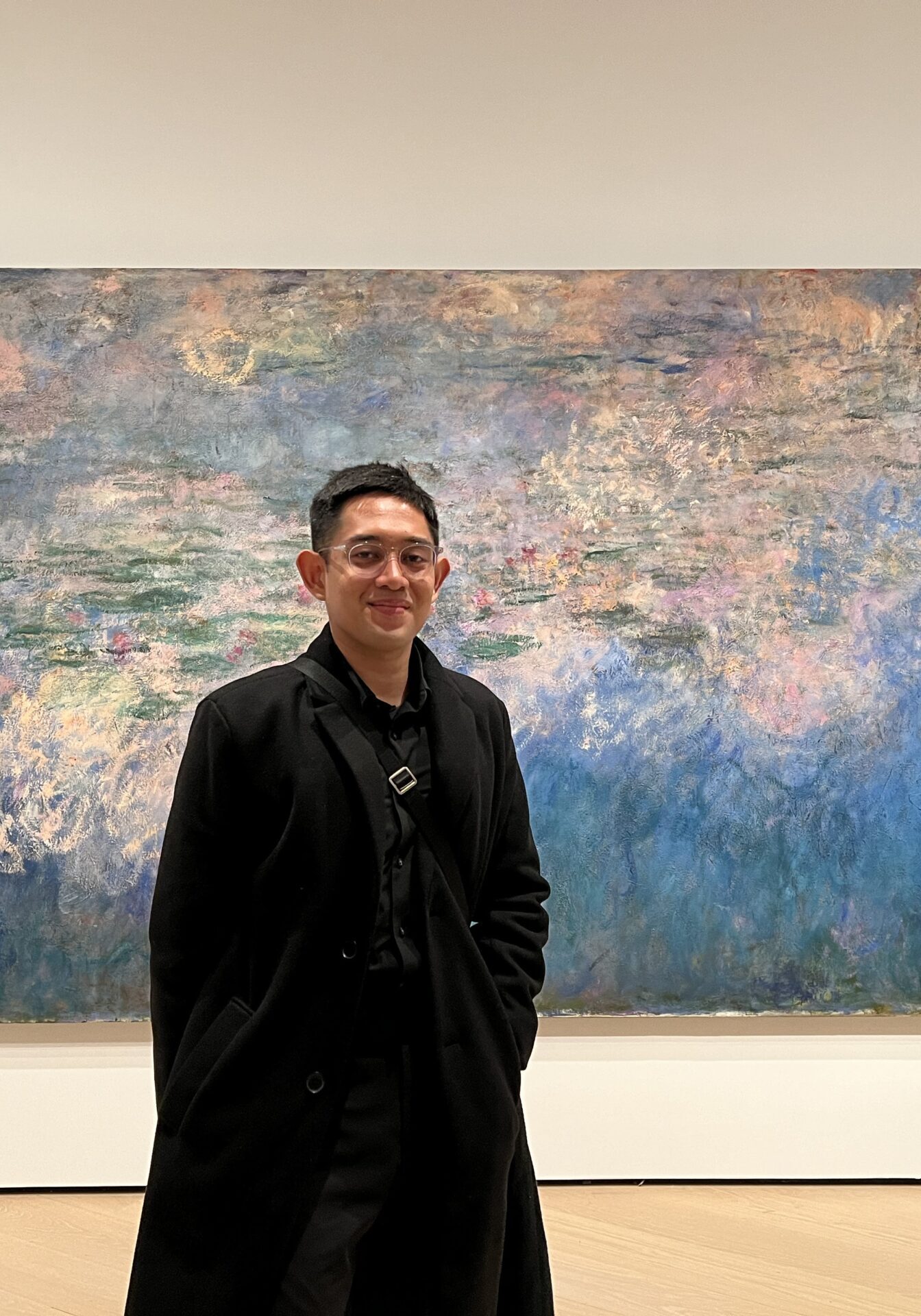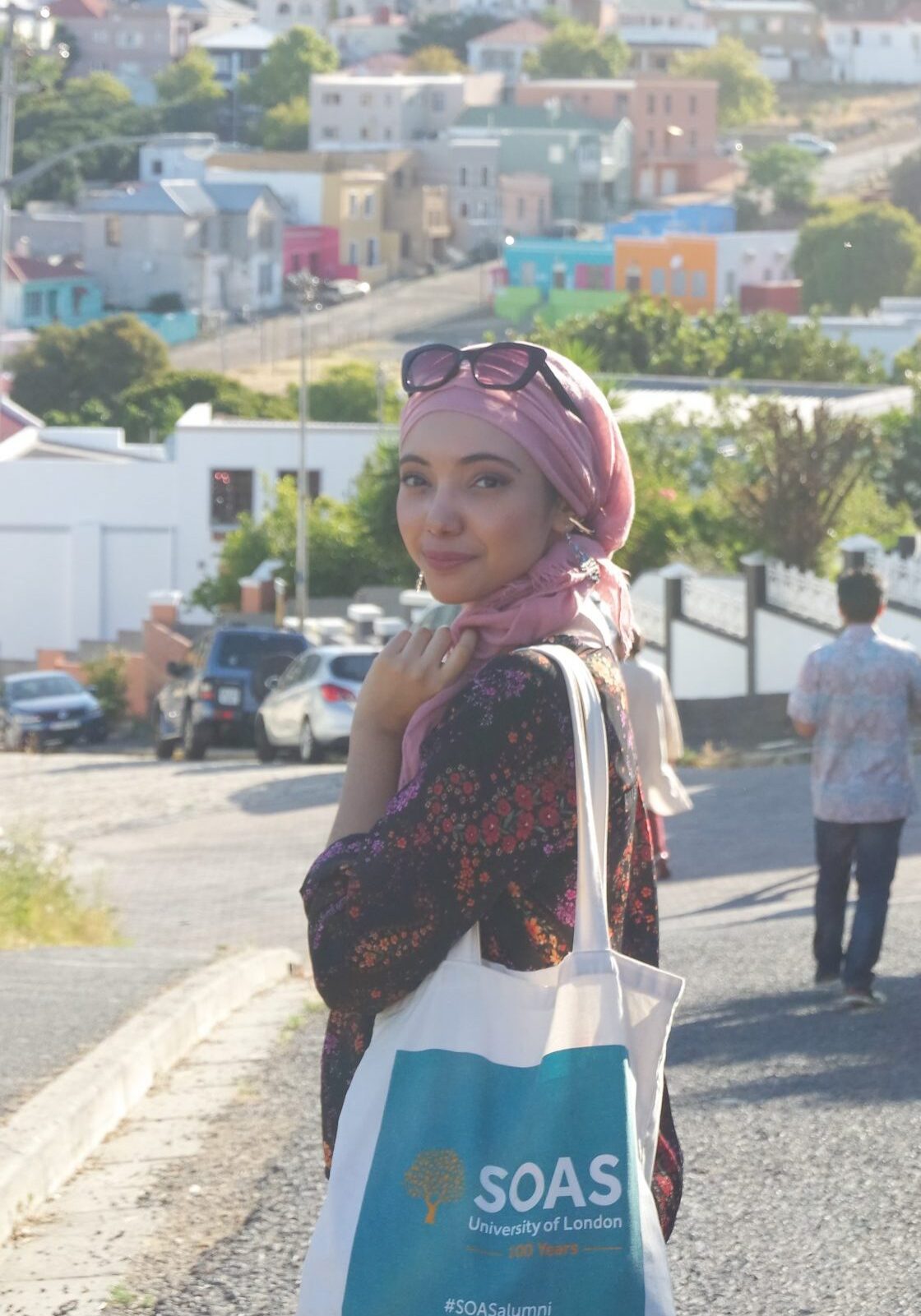Students and Graduates
Current Students

Tina Chau
Digital Intimacy: Towards Posthuman Becomings
Digital intimacy is the primary focus and object of this study; with intent to explore how digital media presents new ways to destabilize the essential understanding of “women” within Anthropocene contradictions and to envision a more fluid notion for women in contemporary China. Rather than how digital media is being used to negotiate, construct or subvert normative gender subjectivity discursively, this study pays attention to how digital heteronormative femininity is deeply material, corporeal, and co-constructed with objects, technologies, and other more-than-human actors. In addition, digital Intimacy in this study is researched through a posthuman feminist lens inspired by posthuman feminist scholarly works such as Donna Haraway’s multispecies and Braidotti’s posthuman subjects, alongside with Chinese philosophical and historical mapping of women’s sexed bodies.
Chen Cheng
Unveiling Human-Centric Design Culture: Exploring the Practices of Designers in Singapore
His research interests explore the interplay between cultural identities and individual agencies among design practitioners in Singapore. Recognising the adaptive role of designers in Singapore's social fabric, the research focuses on the resurgence of human-centric design thinking. This phenomenon adopted by designers serves as a solution template to contemporary challenges in the modern governance of a nation. Furthermore, the trend of design thinking is a global phenomenon that accentuates creativity as a new necessary skill for individuals, The study investigates the historical and cultural formation of design thinking as a popular tactical medium in the postcolonial, multicultural, and neoliberal society of Singapore. It aims to illuminate the discrepancies between individualism, collectivism and nationalism exercised by designers. Through case studies and ethnographic fieldwork among designers who intend to make social change in Singapore, this study intends to offer insights into the cultural identities of designers with individual agency and policymaking in the globalising discourse on design thinking.

Chen Jiayu
A Creative Cosmos: AI-Generated Art on Social Media and Its Potential for Fostering Cosmopolitan Understanding
It is currently an urgent issue for us to examine the sociocultural influence of AI-generated art, as it has emerged as an invisible force, revolutionizing not only the process of artistic creation, but also coloring cultural consciousness and social perspectives. This project explores the intersection of AI-generated art and cosmopolitanism, exploring AI-generated art democratizes artistic creation by making it accessible to a broader audience and serves as a medium for global cultural exchange. By investigating the role of human agency in collaboration with AI and examining how AI-generated art can challenge traditional perceptions of cultural identity, this study hopes to offer a framework for understanding AI art as a vehicle for fostering a more inclusive, cosmopolitan society.

Cheng Xueyan
Rethink Borders, Transcend Boundaries: Transnational Chinese Cinemas in Southeast Asia in the 21st Century
Her research explores transnational Chinese cinema in 21st-century Southeast Asia, examining how it interacts with the region’s cultural, historical, and political landscapes. This study focuses on how cinema represents diasporic Chinese communities and reshapes the imagination of Sinophone identities. Transnational Chinese films reflect the social and cultural changes in Southeast Asia, diasporic cultural identities, inter-Asian transnational cultural interactions, and the dynamics of transnational cultural production. This study views transnational Chinese filmmaking practices in Southeast Asia as both aesthetic and cultural acts, shaped by ongoing inter-Asian interactions, geopolitical realignment, migration, and population displacement. Simultaneously, these practices influence and engage with socio-historical movements and the broader cultural landscapes of Southeast Asia. By examining these films, this study offers a new perspective on inter-Asian transnational filmmaking practices in Chinese cinema.

Khadeeja Amenda Chundanveetil Puthiya Nalakath
Sound, Senses and Hyderabad: Listening to the Past and Present of a City
Her study delves into the listening practices of Hyderabad, a South Indian city, employing a sound and sensory studies framework. She uses ethnography and historical enquiry to explore the everyday sounds of the city belonging to its past and present. Her research explores the diverse ways in which Hyderabad is heard and listened to, emphasizing the sensory experiences associated with these sounds. The cultural question of her project takes up the sounds felt by the ears, sounds yet to be found by the ears, and sounds outside the listening capabilities of human ears. Her research interests include sound studies, sensory studies, visual culture, media anthropology, and Islamic studies.

Fan Jiarong
Reinventing Tradition in Tourist Culture – Contesting Indigenousness “Nationalism” and Political Economy on Chinese Landscape Live Action Performances
Landscape Live-Action Performances (LLAP), a trending tourism format in China that combines enviromental theatre with traditional Chinese philosophies of Shan Shui (landscape in Confucianism). LLAPs, usually installed in touristy cities in the rural area, or second-tier cities to illustrate stories of ancient folklores or minority cultures, are mostly sponsored by local governments to promote tourism. Popular for two decades in China, LLAPs has now been installed to touristy spots in Vietnam and Malaysia. The significance of this research lies in its socio-cultural representations of minority cultures and ancient folklores, the political influence in soft power, and its economic values. This dissertation would focus on contesting the reinvention of traditions, (mis)representation of minority identities, nationalism, and political economy.

Md. Tareq Hossain
Saving a ‘Lost Generation’ of Rohingya: Mapping the Digital Learning Practices in the Cox’s Bazar Refugee Camps
This project examines the role of digital media in the education of Rohingya refugees. It posits that social media platforms, such as Facebook and YouTube, not only provide digital learning opportunities but also play a crucial role in preserving a generation and their cultural identity.
He has been actively involved in research and development for the past five years. His most recent position was in the External Relations department at the United Nations High Commissioner for Refugees (UNHCR) in Cox's Bazar, Bangladesh. He has also presented papers at international conferences and has over a year of experience as a research associate in various international development organizations, including UNICEF, TIB, and IID. He is a member of the South Asia Communication Association (SACA). His research interests focus on the voices of marginalized communities within the contexts of digital inclusion, digital anthropology, ICT for Education (ICT4E), and social justice.

Francis Luis Torres
Beyond City Lights: The Rural Turn in Philippine Queer Studies

Sharon Yvette Xiomara Rosamor 'n Doen
The Women behind the Monstrous-Feminine: Anti-Communist Propaganda and Misogynous Nation-Building through Horror Films in Soeharto’s Indonesia
My dissertation concerns the underexplored covert anti-Communist gender propaganda encoded in horror films produced during President Soeharto’s dictatorship (1966-1998). After the so-called “Communist Coup” in 1965, then-General Soeharto took power by inventing a misogynistic hoax about the Communist women’s movement that bore the brunt of the “Coup” accusations. This violent hoax was steeped in Indonesian – particularly Javanese – folklore and framed within a Javanese patriarchal mystic logic, and eventually became the foundation on which the Soeharto regime was legitimized. My main argument is that this hoax – by the late 1970s completely mythologized – can be uncovered in the “bad” females in Soeharto-era horror films. By analyzing a selection of horror films from the 1970s, 1980s, and 1990s, I attempt to decode the hoax and uncover it as a propaganda method that buttressed Soeharto’s legitimacy and which took the unspoken approach of “misogyny-as-nation-building.”
Recent Graduates

Nurul Huda Binte Abdul Rashid
From Automation to Articulation: Images of Muslim Women in the Data Turn
My dissertation analyses images of Muslim women in the data turn, where the image is transformed into big data, regulated through new modes of collection, categorisation, and circulation. A study of the image-as-data departs from conventional approaches in photo theory as it is guided by an “algorithmic visuality” that combines computational and cultural perspectives. Theorising from the vantage point and subjectivity of Muslim women offers multiple positionalities to this research as it is an identity that is both etched within the margins of “other” and the “orient,” and yet possesses a global visibility due to events such as 9/11 and the flourishing industry of Islamic fashion. This complexity to the identity of Muslim women offers insight into outlier perspectives that critique existing discourse on algorithms, AI and art, and on being a self-identified Muslim woman in Singapore.

Najwa Abdullah
Muslim Aesthetics and Voices on Screen: An Analysis of Contemporary Islamic Cinema in Indonesia
Working at the intersection of media, popular culture, film studies, and contemporary Islam, this dissertation examines the shifting narrative trends and aesthetic patterns used to portray Islam and Muslim identities in Indonesian popular films released between 2003 and 2022. Through specific genre analysis: romance, travel, and social issues, it explores how popular cinema has emboldened the performative and ocular aspects of the struggle over the ideal representation of Islam among diverse groups in Indonesia. Throughout, the research highlights the transmedial nature of the phenomenon by bringing into focus a series of media changes that preceded the surge in Islamic-themed film production. A key aspect is how the trend is driven by two dominant forces: the pietistic project of global Islamic revivalism and the progressivist agenda of the Indonesian New Wave. Working side by side and against one another, they take Muslims’ narrative and visual capacities into new frontiers, while cementing the role of filmmaking in modern Islamic culture in distinct ways.
Smart Fashion: Sustainability, Equity, and the Making of Just Fashion Systems
This thesis examines “smart fashion” as a new fashion system with the potential to transform its networks through connecting the smartness of technology and equity to sustainable fashion. Using Singapore as a case study, it approaches fashion as an assemblage and socio-cultural technology, and shows how designers, policymakers, and users co-create new networks of production and consumption that address social inequality and maintains environmental sustainability. Smart fashion incorporates novel materials and practices rooted in recognition, redistribution, and representation, and embodies a new logic of inter-cultural engagement between producers, workers, retailers and consumers. Extending fashion’s relationship to urbanism by reimagining the smart city with innovative aesthetic and cultural forms, it has the potential to transform policy and promote more equitable societies across Asia.
Politics of Imagining: National Museums and the Display of Asia in Taiwan
This thesis is about four national museums in Taiwan and their exhibition on Asia and Southeast Asia, in which immigration histories plays a crucial role. This thesis critically examines emerging social inclusion discourse’s influence on national museum exhibition, their transformative effect in redefining Taiwan’s multicultural society narrative, and their increasing entanglement with the field of museums worldwide. As shown across the four national museums, exhibiting the other/otherness is used as a method, technique and means to build national consciousness in Taiwan. This is problematic in two ways. One, this action is embedded in the urgency and uprise of the formation of Taiwaneseness after 1990s and the struggle of museums as a field of cultural and symbolic capital (Bourdieu 1983). Second, this research critically criticized the epistemology of studying the other as foreign and representing them in museums and exhibitions as a very western oriented action. Taiwan’s case is particularly interesting because its museums are struggling to overcome that dichotomy of self and other. This thesis is therefore not simply concerned with the museum practice and Western domination, but connected to larger issues of collecting, archiving, and displaying culture in Asia.

Chua Tiong Seng
A History of Translation Discourse in Singapore (Class of 2020)
My research interests lie at the intersection of Cultural Studies and Translation Studies, in particular the role of literary translation in nation-building, identity formation, and the inter-generational transmission of cultural memories in multi-cultural societies like Singapore.

Gao Xueying
The Emergence of Trans-rural Intelligentsia: Grassroots Reproduction of Rurality in Chinese Popular Culture
With globalization, scholarly attention in Media and Cultural Studies is largely given to transnational cultural industry and institutions targeted at the profitable urban audience. However, in Asia, the increased digital literacy and state interventions has increasingly incorporated the urban underclass and rural population into the demography of popular culture. This thesis calls for a rural approach to cultural studies by looking at the emergence of grassroots rural producers as subjects of knowledge production. It argues that these “trans-rural intelligentsia”, as frequent travellers between rural-urban spaces in post-socialist China, take part in social transformation by mobilizing alternative popular cultural imaginaries of rurality among the public and challenges the modern machinery of knowledge production.

Han Minli
Of Dreams and Illusions: A Case Study of the Singapore Film Industry and the Unravelling of Singapore’s Film Hub Ambitions
The aim of this thesis is to examine the role that government and local agencies play in the development of creative and cultural sectors in Singapore. The thesis focuses on the Singapore film industry as a case study as it has been largely neglected in existing literature due to high barriers of entry, and challenges in obtaining real-time and in-depth information about the sector. By analysing industry-specific policies driven by the InfoComm Media Development Authority (IMDA) and the Singapore Film Commission (SFC) and utilizing previously inaccessible official data and statistics supported by interviews with multiple major stakeholders in the industry, this thesis examines the government’s film and media hub agendas and shows that there are too many missing pieces within the current policy regime for these ambitions to be realised. The thesis shows that it is necessary for the government to have a better understanding about the industry and make a strong stand on how it defines film, and the role that film should play within the national context, so as to make better informed and effective policies, with a consistent long-term vision in mind. The thesis suggests that it is timely for there to be an updated White Paper on film in Singapore since the first written more than two decades ago that led to the creation of the SFC. This research paper humbly seeks to provide the foundations for a new White Paper and offers the following strategy in mapping out a blueprint for the SFC’s future organization structure, vision, and mission. In doing so, it hopes that the SFC is able to rejuvenate with renewed energies and support, to better meet these agendas and address the needs and trends of the industry and community.

Samra Irfan
Diffracting Violence: Exploring the Entanglement of Art, Politics and Violence in Kashmir
This dissertation examines the visual culture that is produced in the conditions of violence in Kashmir Valley. Until recently, visual culture was dominated by representationalism, reducing the visual to a signifier of something. Drawing from the theories of new materialism, the dissertation anchors itself in the agency of images, considering images as what Strassler calls “image-events.” The central concern of this dissertation is to explore the efficacy of images, particularly on photographs and artwork/paintings, as objects in the world, and what they do, thereby exploring its entanglement with violence and politics. It raises the question about how to think of this entanglement without reducing the visual as a response to the political. The dissertation draws on ethnographic fieldwork to understand the motivations and inspiration of the artists and to realise the powerful capacities of images. Based on the themes that appear within the artwork, this research study demonstrates how the affective, subjective, temporal, and political are mutually co-constitutive in Kashmir.

Adhvaidha Kalidasan
Understanding Contemporary Craft Businesses as a consequence of neo-liberalization: A study from Tamil Nadu, India
This is the study of Contemporary Craft Businesses of Tamil Nadu, India. The management of craft goods involves re-conceptualization of the cultural meanings, manufacturing, selling of the cultural goods and creation of ‘niche’ consumer society. This is a negotiated practice between the cultural intermediaries and the artisans. The thesis takes up Garnham’s political economy approach (1998, 2002) to place this investigation. Garnham urges the cultural studies research to hold hands with the political economy approach to understand the various structural influences onto the various cultural production processes. This research sees the growth of Contemporary Craft Businesses because of the neo-liberalization and globalisation in India.
Contemporary Japanese Memory Practices of World War II in Singapore (MA Student)
This study questions how Japanese remembering and forgetting of WWII in Singapore became possible. As a decolonial project, I analyse Japanese representations of Singapore in three different aspects: pre-war Japanese texts on the South Seas; wartime Japanese media propaganda; and post-war Japanese tourism in Singapore. The cases reveal a situation in which Japan has forgotten its imperialist past as “over”. What is needed to restore relationships between “Japanese” and Singapore are two interrelated things; 1) the “flow” of time in a restorative approach (Komatsubara 2022); and 2) not seeking a final solution. Sites of memory can foster one’s “negative capability” (Ogawa 2021) to endure being in a state of limbo, with one's values shaken by encounters with others, who have different memories of the same thing. By penetrating the state of limbo at sites of memory in time, it is possible to trace the trajectory of one's thoughts and failures.

Wang Jiabao
Re-Appropriating “Folk” in Contemporary China (Class of 2021)
My research mainly focuses on the delicate connection (as well as collapse) between high culture, mass culture, and folk culture. I am particularly interested in the re-construction of the discourse of “folk” as in folk culture and as in people. My current project looks into the re-appropriation of folk art in heritage sites, folk art museums, as well as contemporary art exhibitions.

Wong Hei Ting
Sound of the Edge: Cantonese Popular Music in Post-1997 Hong Kong
This dissertation examines the roles and cultural values of Cantonese popular music (“Cantopop”) to Hong Kongese in a period filled with sociopolitical changes and unrest from a sound studies perspective. In 1997, same year as the handover of Hong Kong’s sovereignty, the statement “death of Cantopop” was asserted; yet, the music has been circulating and sounding continuously. Focusing on sound, media technology, and the history and culture of Hong Kong, I argue that Cantopop is not merely a mode of entertainment, but, the sound of Hong Kong. I examine, in four cases, mainstream Cantopop with modifications, such as re-contextualization, re-arrangement, and re-performance, which provide them a second chance to be actively listened to. While Hong Kongese identity can be strengthened in spaces where Cantopop can be sounded and perceived, I demonstrate Cantopop as sound is a vital source for placemaking the permanently temporary sonic “Hong Kong” any time and anywhere.




